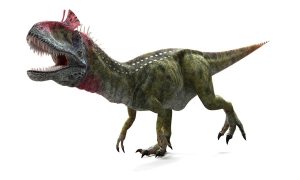
19 interesting facts about Bipedalism
- 👁️ 1135
Bipedalism, the ability to walk on two legs, is a hallmark of human evolution that sets us apart from most other mammals. This trait has been pivotal in the development of human societies, allowing for the use of hands for tools, complex communication, and other activities that have shaped civilization. The origins and evolution of bipedalism have been subjects of scientific study and debate, revealing fascinating insights into how our ancestors adapted to their environments. This form of locomotion has deep roots in the human lineage and has significant implications for our anatomy, behavior, and even the way we perceive the world. Here are 19 interesting and informative facts about bipedalism that highlight its importance in human evolution and beyond.
- Bipedalism is considered one of the key characteristics that distinguish humans from other primates.
- The earliest evidence of bipedalism dates back to approximately 6 million years ago.
- Bipedalism likely evolved for a number of reasons, including energy efficiency in locomotion, the ability to reach higher food sources, and the capacity to see over tall grasses.
- The human pelvis is shorter and broader than that of quadrupedal primates, providing more support for organs during upright walking.
- Human feet have arches that help absorb shock and add springiness to our steps, adaptations for efficient bipedal walking.
- The foramen magnum, the hole in the skull through which the spinal cord passes, is positioned at the base of the human skull, indicating an upright posture.
- Australopithecus afarensis, exemplified by the famous fossil “Lucy,” is one of the earliest known bipedal species.
- Bipedalism freed the hands for tool use, significantly impacting human evolution and cultural development.
- Walking on two legs exposes less of the body to solar radiation while increasing exposure to breezes, possibly aiding in thermoregulation.
- Bipedalism has led to specific adaptations in the human spine, including its characteristic S-shape, which helps absorb impacts from walking and running.
- The Achilles tendon, crucial for running and walking, is much more developed in humans than in other primates.
- Bipedal locomotion may have influenced the development of pair bonding and family groups in early humans.
- The transition to bipedalism is thought to have occurred gradually, with early hominins likely practicing a form of bipedalism in trees before moving to the ground.
- Some theories suggest bipedalism was advantageous for carrying food and tools over long distances.
- The Laetoli footprints, preserved in volcanic ash in Tanzania, provide clear evidence of bipedal walking in hominins over 3.6 million years ago.
- Changes in the environment, such as shrinking forests and expanding savannas, may have provided an impetus for early humans to adopt a bipedal stance.
- Bipedalism is associated with certain health issues, including lower back pain and knee problems, due to the stresses of upright walking.
- Despite being bipedal, humans can still perform quadrupedal movements, especially in infancy.
- Bipedalism has not only shaped human anatomy but also influenced human society, culture, and the environment.
The evolution of bipedalism is a cornerstone of human history, marking a significant departure from our closest primate relatives and setting the stage for further evolutionary developments. This mode of locomotion has deeply influenced human anatomy, behavior, and society, enabling the development of tools, art, and complex communication. Understanding bipedalism offers invaluable insights into our past and underscores the intricate interplay between biology and the environment in shaping the course of human evolution. As we continue to explore our origins, the study of bipedalism remains a key area of research, shedding light on the remarkable journey of human adaptation and survival.











